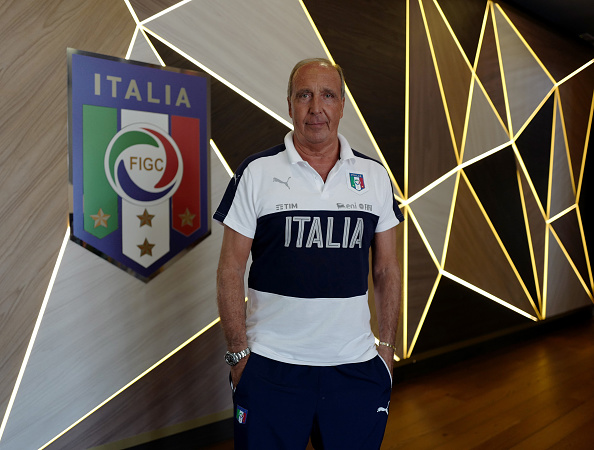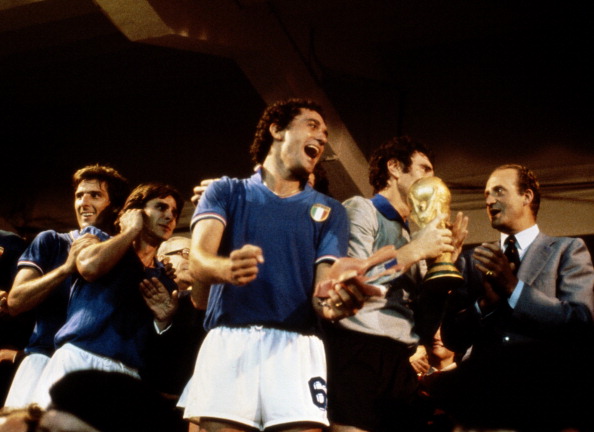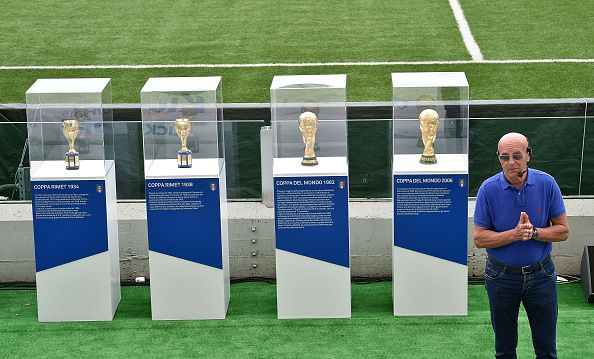
Why Italy have a history of producing great defenders
Resolute defending, tactical ingenuity, diligence, mind games and incisiveness in the final third are some of the characteristics that we tend to relate with Italian football. The European nation has reaped substantial success in the footballing world and has four World Cup titles to its name. What has been conspicuous for several decades is the fact that Italy and the art of defending is a consummate marriage.
No matter how strong or weak the Italian squad seems before a tournament, one cannot take them as lightweights because of their remarkable history of digging deep to grind out results. The Azzurri have always had a winning mentality and ‘winning ugly’ is not something that holds them back. In Catalonia, fancy football grabs more eyeballs but in Italy winning is what matters most. However, is there something wrong with being good at defending? Surely not!
Italy’s lineage of quality defending can be traced back the furthest to the 1930s which featured Vittorio Pozzo’s Metodo. He deployed a 2-3-2-3 formation by tweaking the 2-3-5 that was prevalent in Europe back then. The two extra strikers upfront were dropped back and came to be known as inside forwards, thereby, creating an attacking midfield. Such a shape ensured that there was ample defensive cover.
With Italy’s World Cup triumph in 1934, Pozzo sent a whiff in their air signalling the shift from attack-focused systems to a more prudent, counter-attacking future.
Training adulation
From the 1950s, strict training regimes were developed by Italian clubs which included sophisticated rules and regulations to keep players’ behaviour in check. One of the victims of this system was English forward Jimmy Greaves who had a short-lived career at AC Milan. Nereo Rocco was the head coach during Greaves’ ephemeral spell and he gave players little personal freedom, who received a list for daily to-do activities and even bedtimes.
The team worked hard defensively and was built around playmaker Gianni Rivera. Rossoneri excelled under this doctrine and won the Italian league in 1962 and the European Cup in 1963.
Inter Milan (then, Grande Inter) brought in Argentine manager Helenio Herrera from Barcelona in 1960. Austrian Coach Karl Rappan is known to have invented the verrou (lockdown in French) system of defending but this encompassed four fixed defenders at the back and an austere man-marking arrangement.
Herrera transformed this into the 5-3-2 catenaccio (doorbolt in Italian) tactic and included a 5th defender between the two centre backs (known as sweeper or libero) who dealt with attacks that managed to penetrate beyond the two centre-backs.
The aim was to give greater freedom to the full backs for counter-attacking the opposition. The execution of the catenaccio system demanded a supreme level of adroitness. This level can be said to be at par with the scale at which the Fordist priniciples operated in the factories of Milan and Turin in those days. Hence, Herrera drilled the players in a quasi-military style.
The philosophy proved to be fruitful as Inter won scudettis in 1963, 1965 and 1966. The team also clinched consecutive European Cups in 1964 and 1965 which were followed up by Intercontinental Cup scalps in the same years.
Continuation of the art: Italy’s fortification

Gradually, defending started getting celebrated in Italian football culture. The Italians became solid at defending which made their teams tough nuts to crack. The defenders didn’t simply resort to clearing the ball, they garnered the skill of passing it out of trouble as well. If the situation demanded ‘dirty work’ they didn’t refrain from doing it which included tactical fouls and hurling the ball out of harm’s way.
The art has witnessed different kinds of wizards over the years. There have been smooth sailors and composed marshals like Gaetano Scirea but there have also been intimidators like Claudio Gentile. Scirea deftly played the role of a libero (sweeper back) and won every single club trophy as well as the World Cup without ever receiving a red card.
Gentile, on the other hand, was a mean machine and put on an exemplary and notorious display of man-marking to nullify Maradona in the 1982 World Cup, which Italy ended up lifting eventually. Hence, with such history it is no surprise that Italy is a continuous producer of complete, pure defenders who are not afraid to put their bodies on the line and defend, almost as if they’re doing it for survival on a war-front.
Odd one out
Arrigo Sacchi went against the flow and challenged the defensive legacies in Italy by forging a Milan side that played free flowing attacking football in the late 80s. The opponents were pressed deep into their own half. The manager did achieve laurels by winning two European Cups and a Serie A title in his four years with Milan.
The longevity of his system wasn’t to be and it fizzled out because it proved to be too exhaustive for the players who eventually ran out of steam. However, one cannot deny that he did seriously challenge the status-quo in Italy.
Legacy prevails
Azeglio Vicini led Italy to the 1990 FIFA World Cup semifinal with slender margin victories in six games in which Italy scored 7 but conceded none. In the 2006 FIFA World Cup 2nd round match against Australia, Italy found itself down to 10 men in the 50th minute which prompted coach Marcello Lippi to switch to a defensive formation. The British newspaper The Guardian then stated that it seemed as though Helenio Herrera, the catenaccio priest, had possessed Lippi’s soul. The Italians went on to win the 2006 edition of the World Cup.
Despite the ups and downs, the Italian outfit is still a formidable one in the pantheon of world football today. In the 2016 Euros, the Italy side showed what results dogged defending can reap as they convincingly reached the quarter finals and only lost to Germany on penalties.
In the 2016-17 Champions League campaign, Juventus, led by Max Allegri, managed to shut shop and keep a clean sheet over two legs against a potent Barcelona attacking force. With AC Milan and Inter Milan falling from grace, Juventus is the torch bearer of Italian clubs in European competitions of late and may bring some joy to the nation if they pip Real Madrid to win the UEFA Champions League in Cardiff on 3rd June.
Hall of fame and the future
Franco Baresi, Paolo Maldini, Fabio Cannavaro, Gianluca Zambrotta, Alessandro Nesta, Giorgio Chiellini, Andrea Barzagli and Leonardo Bonucci are some of the great defenders that Italy has proudly produced.
The future doesn’t look too bad for the Azzurri either as they have the likes of Alessio Romagnoli, Daniele Rugani, Adam Masina loaded in their arsenal who look set to continue Italy’s defensive bequest.
No defensive unit is complete without a goalkeeper. The Italians have had the privilege of having the legendary Gigi Buffon between the sticks over the last two decades who is likely to pass on the baton to the highly promising Gianluigi Donnarumma.
The dictum that defence wins championships is one of the oldest chestnuts in sports and the Italian national side as well Italian clubs have more often than not proved this adage true.



